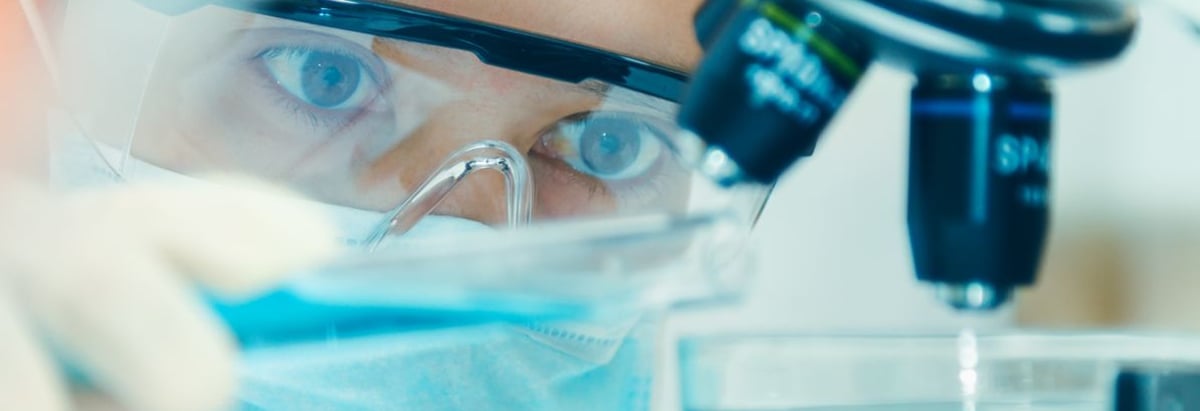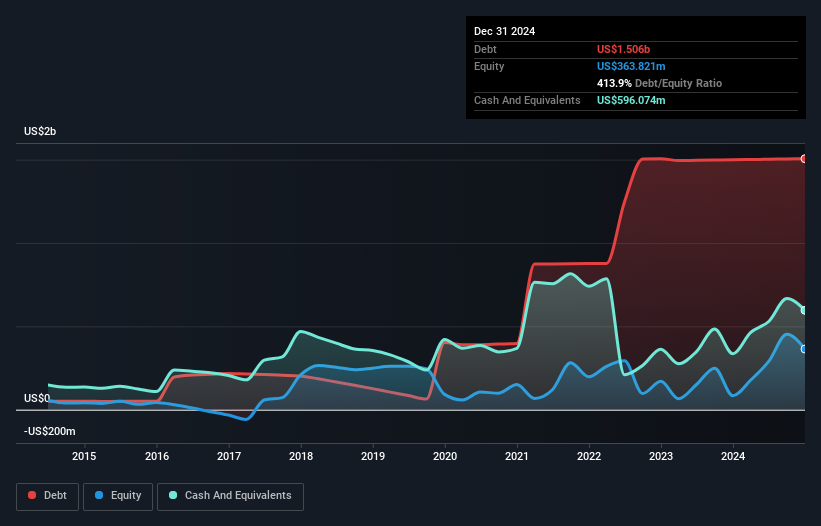- United States
- /
- Biotech
- /
- NasdaqGS:HALO
Halozyme Therapeutics (NASDAQ:HALO) Has A Rock Solid Balance Sheet

Warren Buffett famously said, 'Volatility is far from synonymous with risk.' So it seems the smart money knows that debt - which is usually involved in bankruptcies - is a very important factor, when you assess how risky a company is. As with many other companies Halozyme Therapeutics, Inc. (NASDAQ:HALO) makes use of debt. But should shareholders be worried about its use of debt?
When Is Debt A Problem?
Debt and other liabilities become risky for a business when it cannot easily fulfill those obligations, either with free cash flow or by raising capital at an attractive price. Ultimately, if the company can't fulfill its legal obligations to repay debt, shareholders could walk away with nothing. However, a more frequent (but still costly) occurrence is where a company must issue shares at bargain-basement prices, permanently diluting shareholders, just to shore up its balance sheet. Of course, debt can be an important tool in businesses, particularly capital heavy businesses. When we examine debt levels, we first consider both cash and debt levels, together.
What Is Halozyme Therapeutics's Net Debt?
As you can see below, Halozyme Therapeutics had US$1.51b of debt, at December 2024, which is about the same as the year before. You can click the chart for greater detail. However, it does have US$596.1m in cash offsetting this, leading to net debt of about US$909.7m.

How Strong Is Halozyme Therapeutics' Balance Sheet?
We can see from the most recent balance sheet that Halozyme Therapeutics had liabilities of US$139.1m falling due within a year, and liabilities of US$1.56b due beyond that. Offsetting these obligations, it had cash of US$596.1m as well as receivables valued at US$308.5m due within 12 months. So its liabilities total US$795.1m more than the combination of its cash and short-term receivables.
Since publicly traded Halozyme Therapeutics shares are worth a total of US$7.26b, it seems unlikely that this level of liabilities would be a major threat. However, we do think it is worth keeping an eye on its balance sheet strength, as it may change over time.
Check out our latest analysis for Halozyme Therapeutics
We use two main ratios to inform us about debt levels relative to earnings. The first is net debt divided by earnings before interest, tax, depreciation, and amortization (EBITDA), while the second is how many times its earnings before interest and tax (EBIT) covers its interest expense (or its interest cover, for short). Thus we consider debt relative to earnings both with and without depreciation and amortization expenses.
Halozyme Therapeutics has a low net debt to EBITDA ratio of only 1.5. And its EBIT easily covers its interest expense, being 105 times the size. So we're pretty relaxed about its super-conservative use of debt. On top of that, Halozyme Therapeutics grew its EBIT by 62% over the last twelve months, and that growth will make it easier to handle its debt. When analysing debt levels, the balance sheet is the obvious place to start. But ultimately the future profitability of the business will decide if Halozyme Therapeutics can strengthen its balance sheet over time. So if you're focused on the future you can check out this free report showing analyst profit forecasts.
But our final consideration is also important, because a company cannot pay debt with paper profits; it needs cold hard cash. So the logical step is to look at the proportion of that EBIT that is matched by actual free cash flow. Over the last three years, Halozyme Therapeutics recorded free cash flow worth a fulsome 91% of its EBIT, which is stronger than we'd usually expect. That puts it in a very strong position to pay down debt.
Our View
Halozyme Therapeutics's interest cover suggests it can handle its debt as easily as Cristiano Ronaldo could score a goal against an under 14's goalkeeper. And that's just the beginning of the good news since its conversion of EBIT to free cash flow is also very heartening. Considering this range of factors, it seems to us that Halozyme Therapeutics is quite prudent with its debt, and the risks seem well managed. So we're not worried about the use of a little leverage on the balance sheet. When analysing debt levels, the balance sheet is the obvious place to start. However, not all investment risk resides within the balance sheet - far from it. For example, we've discovered 1 warning sign for Halozyme Therapeutics that you should be aware of before investing here.
When all is said and done, sometimes its easier to focus on companies that don't even need debt. Readers can access a list of growth stocks with zero net debt 100% free, right now.
Valuation is complex, but we're here to simplify it.
Discover if Halozyme Therapeutics might be undervalued or overvalued with our detailed analysis, featuring fair value estimates, potential risks, dividends, insider trades, and its financial condition.
Access Free AnalysisHave feedback on this article? Concerned about the content? Get in touch with us directly. Alternatively, email editorial-team (at) simplywallst.com.
This article by Simply Wall St is general in nature. We provide commentary based on historical data and analyst forecasts only using an unbiased methodology and our articles are not intended to be financial advice. It does not constitute a recommendation to buy or sell any stock, and does not take account of your objectives, or your financial situation. We aim to bring you long-term focused analysis driven by fundamental data. Note that our analysis may not factor in the latest price-sensitive company announcements or qualitative material. Simply Wall St has no position in any stocks mentioned.
About NasdaqGS:HALO
Halozyme Therapeutics
A biopharmaceutical company, researches, develops, and commercializes of proprietary enzymes and devices in the United States and internationally.
Undervalued with solid track record.
Similar Companies
Market Insights
Community Narratives



